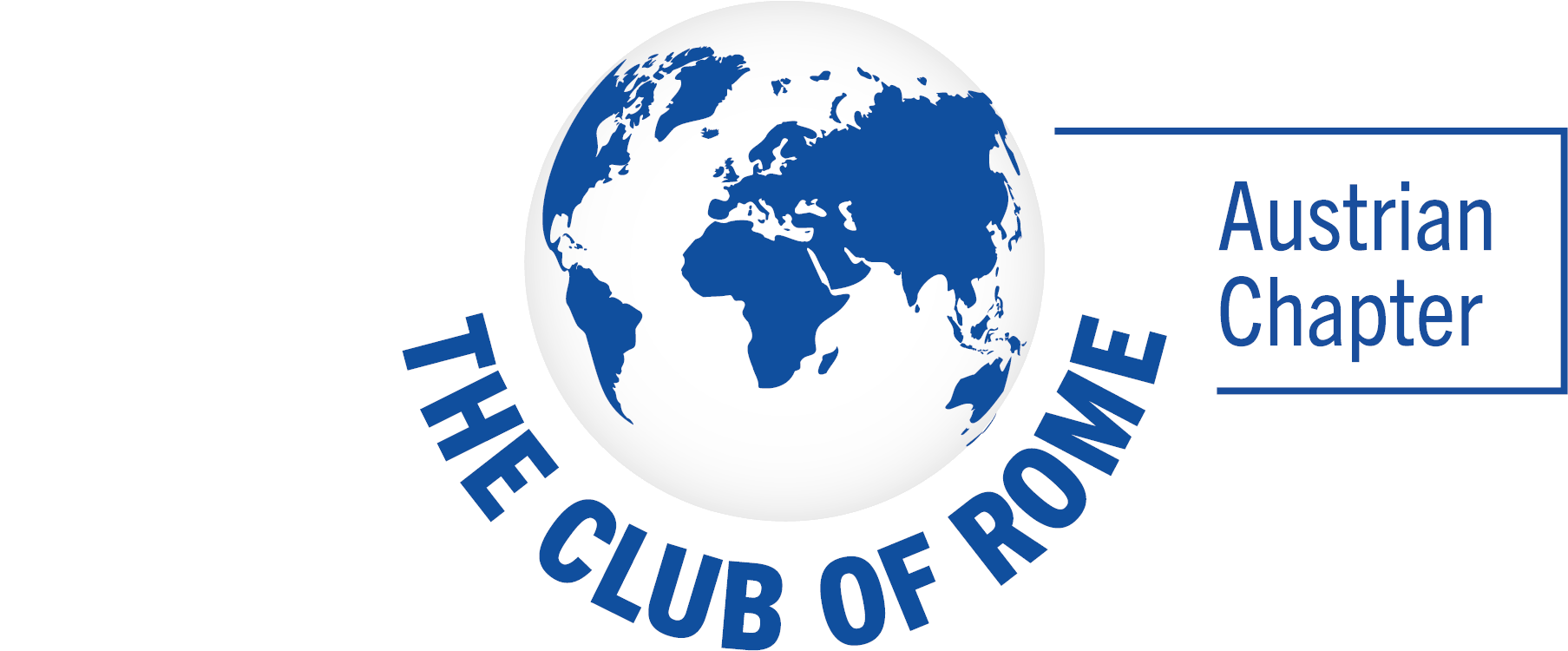April 15, 2022, by Pia Minixhofer and Martin Hoffmann
The event “Mind the gap or Where is the circularity gap” was dedicated to the question how to think and implement circular economy and climate protection together and thus also achieve the sustainability goals of the Agenda 2030.
Building on Matthew Fraser’s keynote, it shows that the question of “metrics” is quite important for countries to act on and measure. Because resource scarcity is going to be the issue for the next few years. So how can we get out of our bubble and into widespread implementation?
The Panel Discussion
Below we have summarized essential statements from the panelists. Due to the animated and detailed discussion, not all aspects are taken up and summarized here. To listen to the full answers of the panelists and the entire discussion, we would like to refer you once again to the recording of the event: Youtube
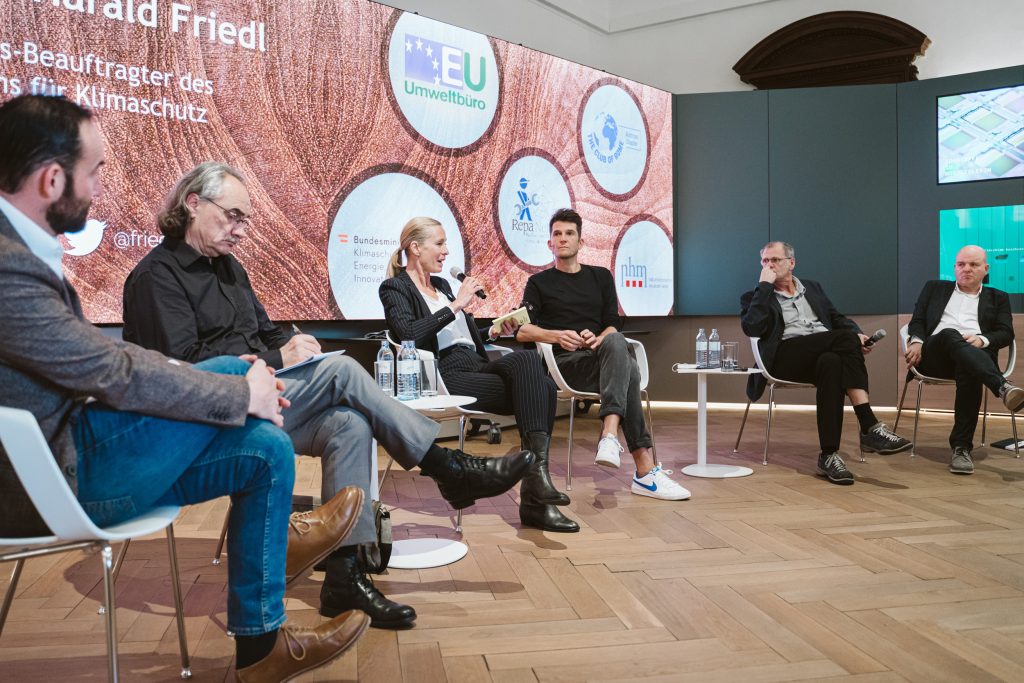
Panel
• Karin Huber-Heim (Circular Economy Forum Austria)
• Willi Haas (BOKU)
• Marcel Krejc (Matwash)
• Rainer Schultheis (SAPHENUS)
• Karl Kienzl (BMK)
Moderation: Harald Friedl (Circular Economy Accelerator Austria)
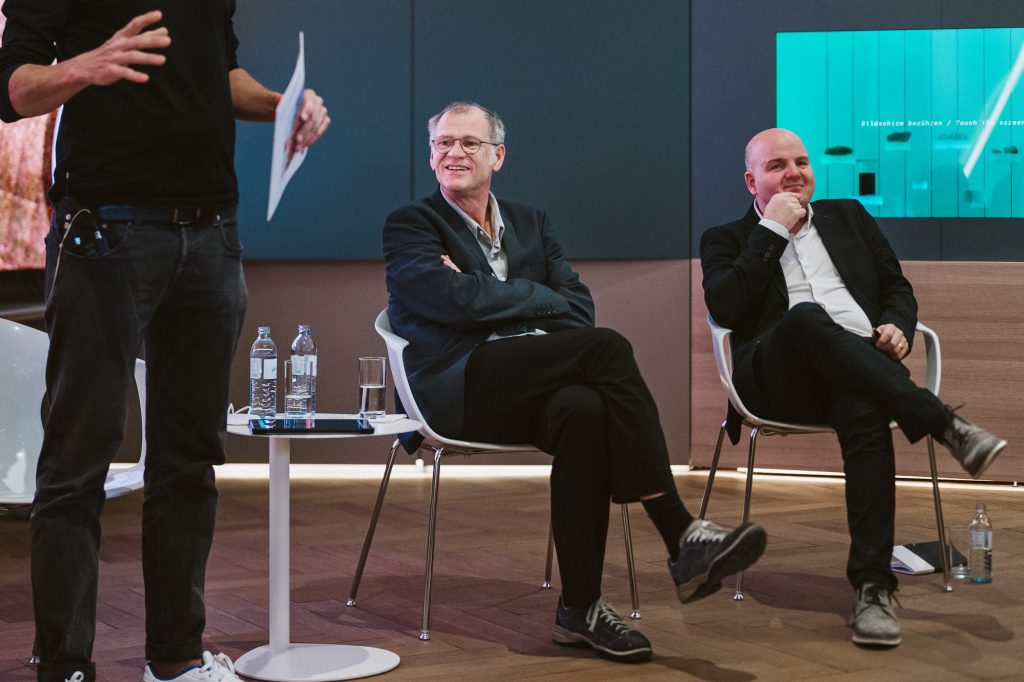
Willi Haas (BOKU)
Circularity has declined since 1900. More and more resources are being put to better use, but even more resources are being newly extracted. We used to have a world of scarcity for a long time. Now we have achieved prosperity with all our fossil energy and now everyone wants to be emperor.
There is a bubble where we think it is a good idea to build new governance structures. And there is a mainstream that thinks in silos. Everybody thinks in their silo about their own crisis and this prevents connection. There is not only the climate crisis. If we see all the crises at the same time, it will take a big rebuild. But maybe the restructuring can address several crises at the same time. Maybe we can create other forms of cooperation that are seen as more resilient and thus also reduce resource consumption.
In politics, you don’t like to tell society what to do, because you are elected by them. You don’t like to tell the economy what to do, because you are dependent on them to a certain extent. This triangle therefore supports our constantly growing consumption of resources. In order to get out of the bubble, we need to find entry points. How do you find a point here where a politician likes to be elected, is not bludgeoned by the economy, the economy doesn’t need to bludgeon anyone, and for us, a climate-friendly life is so irresistible that we don’t want anything else?
Our economy is not God-given, it is constructed. And it’s been constructed since the 1950s, toward consuming more and more. Reorienting those incentives is quite important. We all have to go out and say we don’t want environmentally harmful products. It would be something if companies go bankrupt, not only when they are insolvent, but because they fail in environmental, circular or social issues; that is, a company is shut down, even though it makes profits, because it acts in a socially irresponsible way.
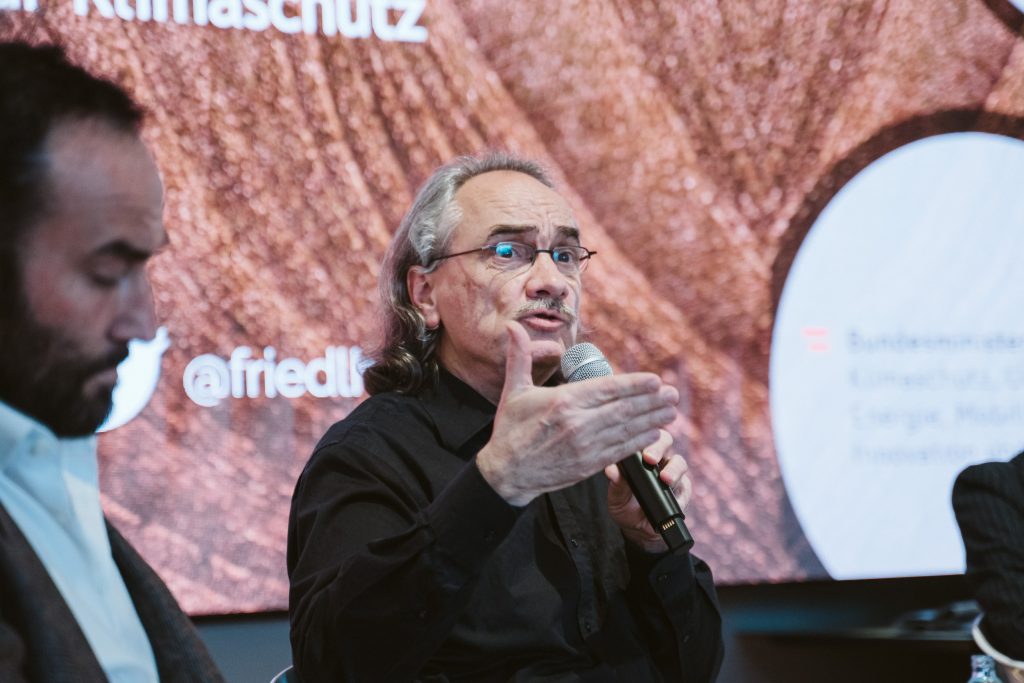
Karl Kienzl (BMK)
The bubble has to be opened by many individuals in many places. Society must actually change its behavior, politics must set the framework conditions, and then there is the very important area of companies, which must think a few steps further, across all sectors.
We are all asked always and everywhere, whether at home with private consumption or at our workplace and standing up for our convictions, we have to deal with the contradiction of the SDGs regarding “sustainable growth.”
Product labeling is quite important, but we simply cannot charge all products uniformly worldwide. For that, the supply chain law is a good approach. With a supply chain law and EU-wide monitoring, we are already able to achieve a lot.
We need a government geared toward the future. A government program with a negotiation of possibilities. The more ministries are involved, the broader the measures to be implemented. We are trying to bring together many ministries for the Austrian circular-flow strategy, building on society, business and science, so that the entire government is behind it.
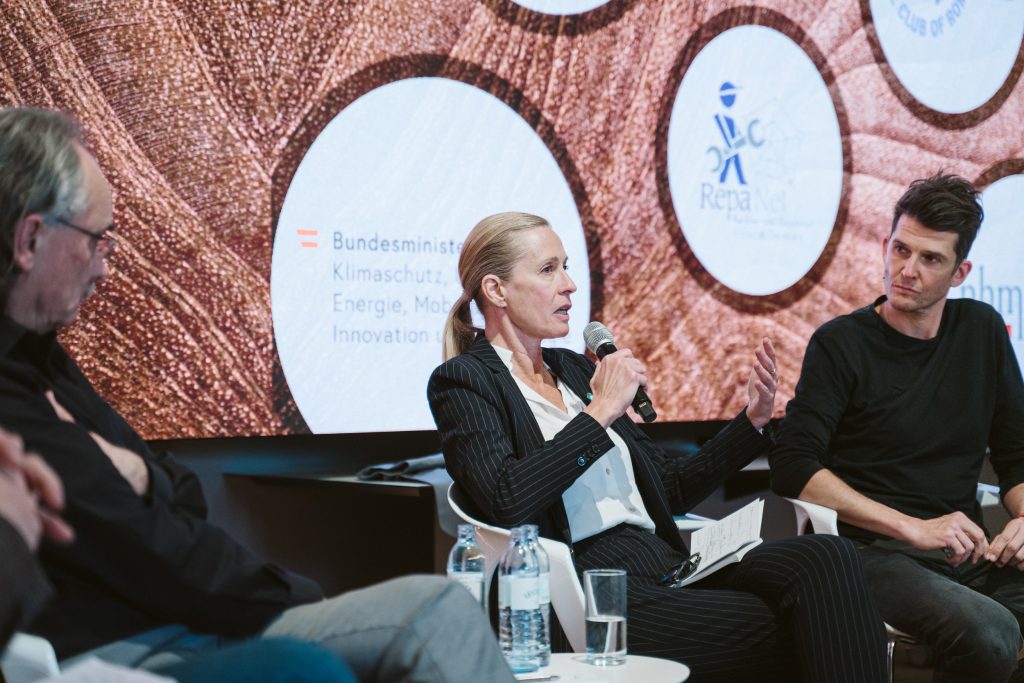
Karin Huber-Heim (Circular Economy Forum Austria)
Just as we were taught consumption after World War II, we must now learn to think circularly again. Consumption is man-made, the linear economic system is built by us and can therefore be rebuilt. The question is only, do we manage to renew a system by rupture or by transformation. The image for this is a passenger airplane that gets the engine replaced during the flight. The circular economy is the one lever and we have to make it conceptually possible for us to achieve this transformation without breakage.
At present, nothing is set up for sustainable, circular business. Working against this with the resources we have is a bit like giving students or young business people a hammer and nail and asking them to build a spaceship. They have to work everything out for themselves and swim against the tide, against funding tenders, against investors with a short-term profit focus. That is real pioneering work. That should be changed. We should send the students out into the world with tools so that they can actually build the future they are supposed to live in.
What underlies this is the disconnect between social and natural sciences. We need to bring together the qualitative and quantitative studies, and train students in an interdisciplinary way. To make future issues addressable, you have to think about things coherently, and we all don’t do that enough.
Education needs to be involved because we’ve already forgotten how to think circularly for two generations. It will take all the creativity we can muster.
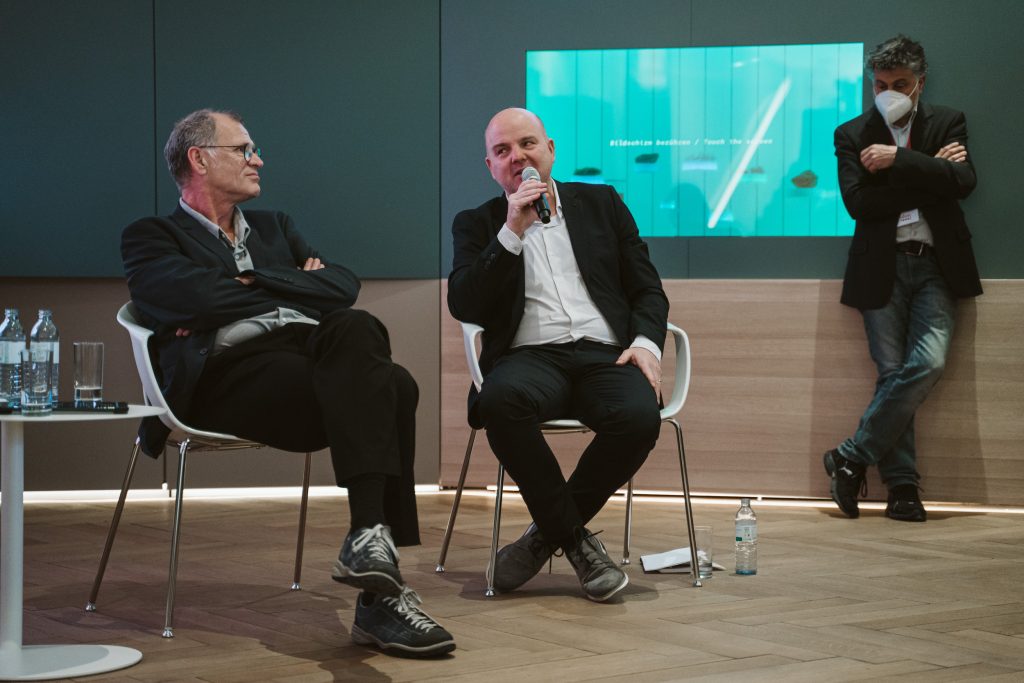
Rainer Schultheis (Saphenus Medical Technology)
For us in the medical technology sector, the well-being indicators are at least as important as the issues of environmental sustainability metrics. These need to be intertwined and developed. If we think systemically and want to reduce phantom limb pain in all countries of the world with our prostheses, we very quickly come to the sustainability indicators of the SDGs and the limits of the measurability. We need to rethink the issues systemically and not go blindly to new countries with set ways of thinking, but rather use the resources on the ground. In the case of disruptive technologies, such as ours, awareness is needed, also from the funding side, to actively approach companies and demand sustainability.
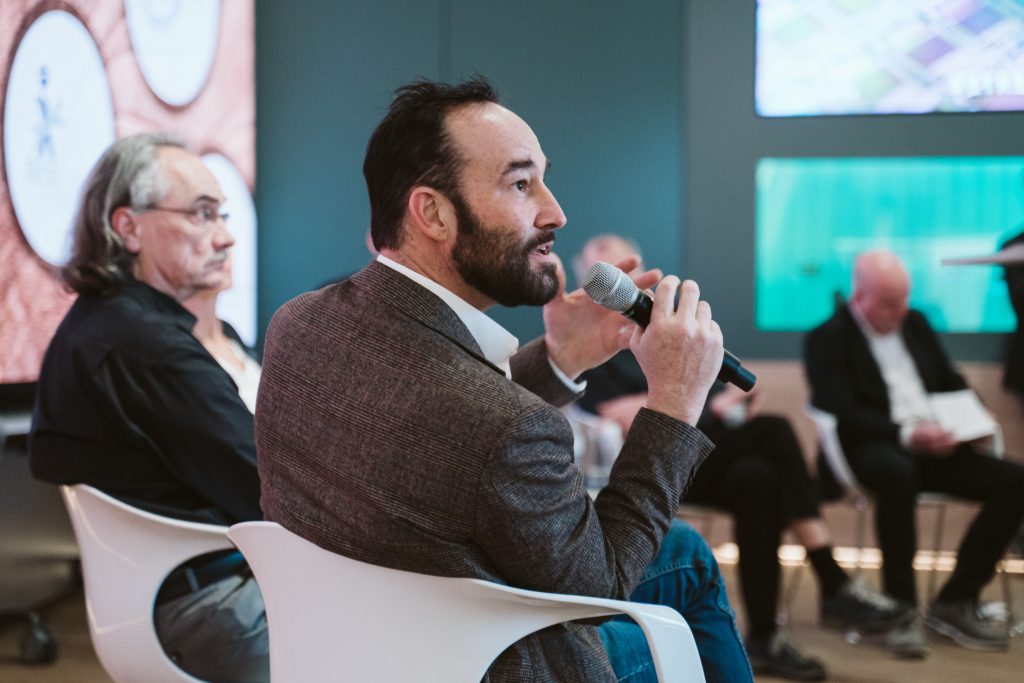
Marcel Krejc (Matwash)
The linear behavior is cultivated when buying the mattress: quality is rather secondary, the place of production as well, the main thing is cheap and after consumption it is simply thrown away. We wash mattresses on the one hand for hygiene and on the other hand for optimal use of resources, as this prolongs their life. Structural changes are needed so that this is also established in other areas. We also need to educate consumers to keep products in the cycle as long as possible.
Today’s focus is on energy use and energy origin, but we know that almost half of GHGs are produced because of the manufacturing of products. We throw away too much, which is then only thermally recycled. We need to analyze and break down these entrenched structures, create uniform regulations, and challenge the politicians.
The circular economy is an opportunity for young companies. All the new ideas also create new jobs, both low-threshold and high-tech jobs. The circular economy should really be seen as an opportunity for everyone.
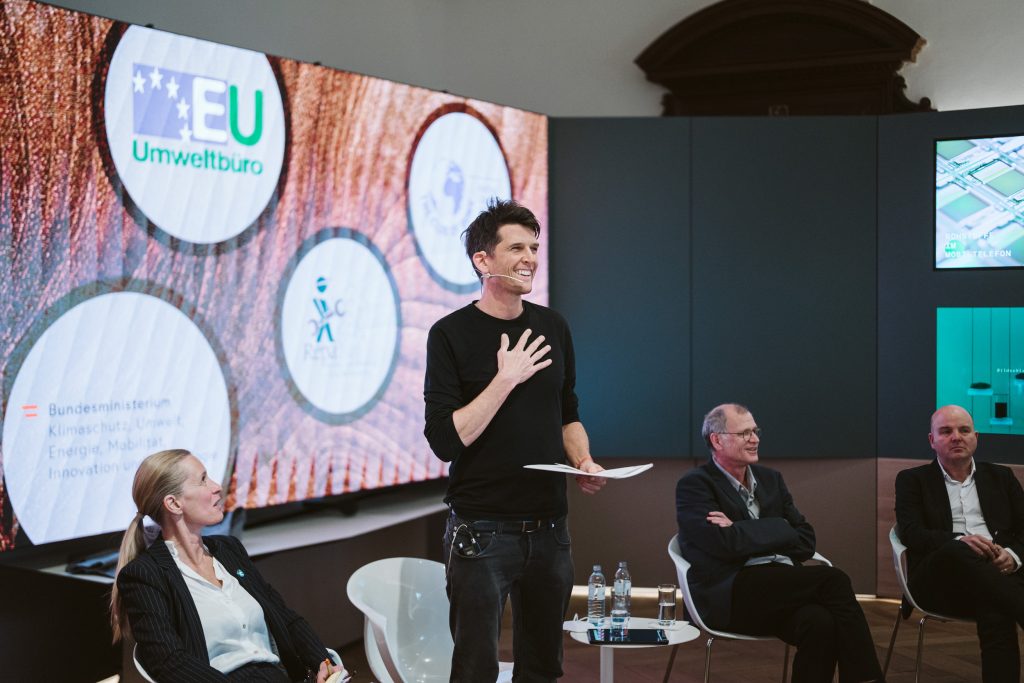
„Ich hoffe, ihr fühlt euch alle ermächtigt etwas zu tun.“
Harald Friedl, Circular Economy Accelerator Austria
Nach der angeregten Diskussion können wir dem nur zustimmen.
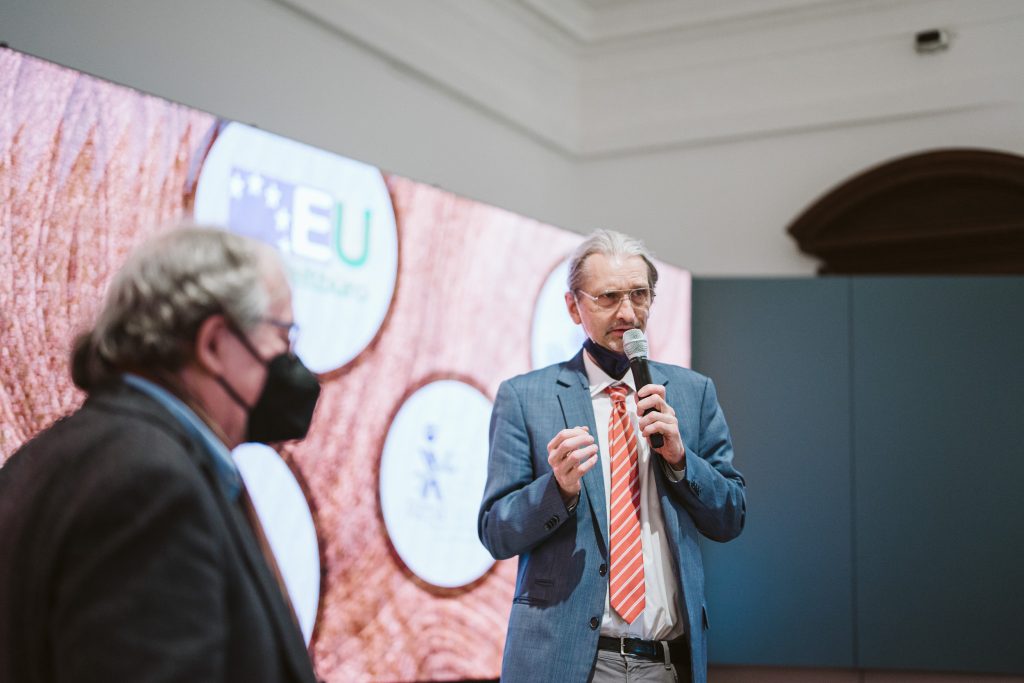
„Hier hat man heute gesehen, dass alle gemein haben, es gemeinsam schaffen zu wollen und das ist auch unser Ziel. Unterschiedliche Akteur:innen zusammenzubringen, von den Bläschen in die Blase, das ist auch unser Ziel.“
Fritz Hinterberger, Club of Rome Austrian Chapter
Alle Bilder der Veranstaltung finden sich hier:
